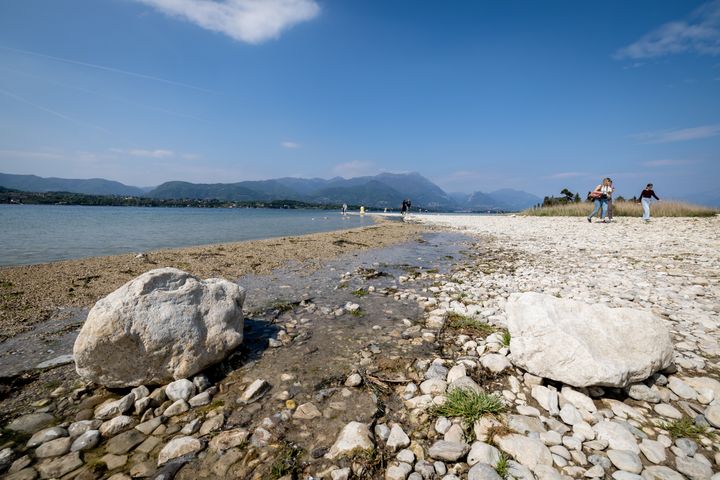
Greenhouse gases are behind the recent snow droughts seen in the Northern Hemisphere, scientists have found.
Compared to the usual droughts we talk about – when there’s an absence of rain, when soil dries up or when water supply does not meet demand – snow droughts are perhaps not quite as well known.
The term has been around for some time, regularly used in the late 1970s and 2010s, but this is the first time greenhouse gases have been identified as a contributor to the last 40 years of snow drought above the equator.
Here’s what you need to know.
Why is snow important?
Snow makes a key part of our water supply.
According to a new study published in Nature this week, more than 2.1 billion people live downstream of snow-covered mountains in the Northern Hemisphere. They depend on the water supply which comes down the mountains in the warmer months.
The Northern Hemisphere is also home to almost 90% of the world’s population – and 80% of whom rely on snow-fed rivers like Mississippi and Daube.
But sadly, those rivers have now passed a climate tipping point.
Snow is no longer building up in the lower areas, and instead it is accumulating higher and higher up mountains.
The climate crisis is making the air at lower altitudes is either too warm for snow to settle – turning snow into rain – or the winter conditions are too dry for it to fall in the first place.
Too much rain instead of snow can cause flooding for areas prepared more for snow.
Snow can also impact exacerbate wildfire season – something which has become a growing likelihood in Europe over the last few years.
A snow drought can leave land much drier when temperatures eventually warm, meaning wildfire season ends up starting earlier. This happened in Canada last year, triggering the most destruction fires has ever seen.
Fires can in turn make droughts worse, as well, meaning snowpacks (the mass of snow on the ground) melt more quickly. That’s because the cleaner the snow, the more sunlight it reflects – and so it melts at a slower rate.
Wildfires dirty the snow with soot and ash, meaning it melts faster.
And snow drought will probably become a bigger problem as global temperatures rises, because once winter heats up past an average of -8C, the phenomenon accelerates, too.
Where are we seeing snow drought?
Northeastern US and much of Europe saw a 10% of 20% decline in snow, per decade, for the last 40 years, according to the study.
Snow is dropping in northern Italy, Afghanistan, parts of Central Asia, northeastern China and the Andes.
The US southwest has seen its worst mega-drought in at least 1,200 years in the period since 2000.
Although, as with all climate crisis consequences, it isn’t straight forward as saying snow decline is falling everywhere.
The scientists found snowpack in mid-latitude areas has decreased by 4% – but increased at higher latitudes by about 2.5% per decade – since 1981.
This only makes things harder for us to address the issue, as the study pointed out.
“It is difficult to identify the regions most vulnerable to snow loss and, by extension, to develop appropriate strategies to manage present and future water security risks from snow changes,” the scientists said.
